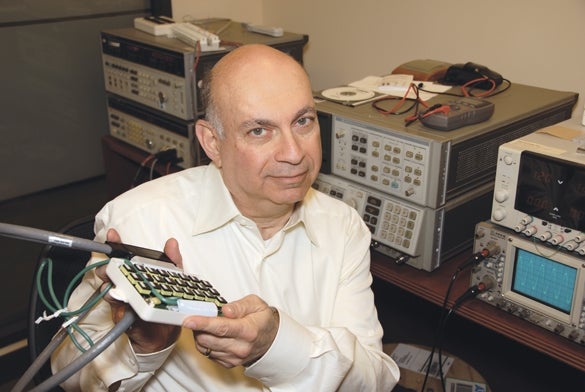There was a time when DSL was the next big thing.
But that time has come and gone, thanks to cable modems and other faster modes of data delivery and Internet hook-ups.
But a Westborough startup called Accell Systems, led by CEO Alan Davis, hopes to provide DSL with some much needed CPR.
Part of DSL’s demise was that its usefulness was limited by geography. The farther a DSL customer was from a central office – the industry term for a telecommunications hub – the slower the Internet connection speed.
Accell Systems has developed an electronic circuit that can boost DSL signals to go longer distances while making them faster and less noisy, two of the biggest problems associated with DSL broadband, according to Davis.
Specifically, Accell’s technology is supposed to double the distance the DSL signal can travel from 3 miles from a central office to 6 miles.
“Broadband is a great space to be in,” Davis said. “It’s very exciting.”
The company has been granted a patent for its technology and has a second patent pending. It’s currently testing its technology at several telecommunications companies here and abroad.
Copper Connections
Accell’s product, called Nexus, is an electronic circuit board in a plastic box, with access for 24 DSL lines. The box is installed either at the central office or at a remote terminal, making it unnecessary to interrupt customers’ DSL service when it’s installed.
DSL’s medium, twisted copper wire pairs in cabled bundles, gives rise to the distance and noise problems. Each copper pair is put directly into the cable with no metallic electrical shield between it and the surrounding pairs of twisted copper pairs.
For the lines to have little noise in them, the copper pairs must be electrically balanced, which Accell’s Nexus does. Nexus fixes signal problems by essentially shifting most of the interference to the ground.
The longer the lines are, the more noise is generated in them, Davis said, so Nexus can help rural telecommunications companies expand their customer base to reach more people.
Many of the copper lines through the United States, particularly in older areas like New England, are degrading. “The dirtier the line, the better it works,” Davis said.
Six to nine months after it is fully tested, Davis expects the company will be able to sell it in volume, and the year following that, he expects Accell will see at least $1 million in revenue.
Accell and its team have attracted angel investment money of $500,000, as well as some of Davis’s own money, but would like to find an investor or multiple investors who could invest up to $1 million so it can roll out the product when the time comes, David said.
Davis believes there is a large market for the company’s extender. Cable broadband access still has a slight edge on DSL access in the U.S., but worldwide it is a different story.
“In the broadband market globally, there are a lot more DSL than cable lines for broadband access,” said David Passmore, research director at the Burton Group, a Utah-based IT market research firm.
A number of years ago, cable had the lead and DSL was way behind, he said, with the gap much closer now, although cable still has a slight lead.
Forrester Research Inc., a market research company in Cambridge, surveyed almost 60,000 U.S. and Canadian residents, and found that it was evenly split between DSL and cable, each getting 33 percent, with the rest being dial up, satellite or fiber.
DSL’s distance limitation isn’t as much of an issue globally, particularly in countries like Japan and Korea, which have dense populations, according to Passmore.
But here in the U.S., a product that does what Accell System’s Nexus extender claims to do could be a boon to rural telecommunications companies where houses are more spread out.
Speed is also a limiting factor for DSL, Passmore said, and if the product doubles the speed that would make it even more attractive, he said.

